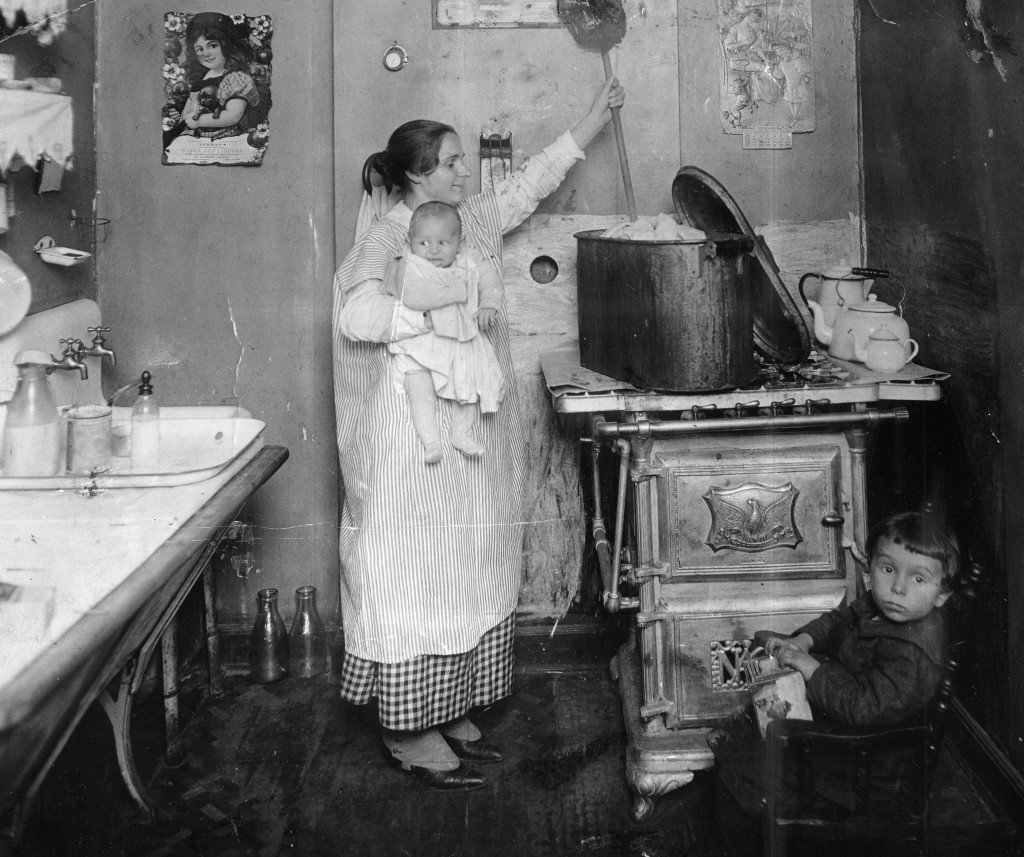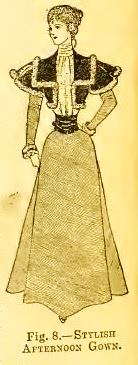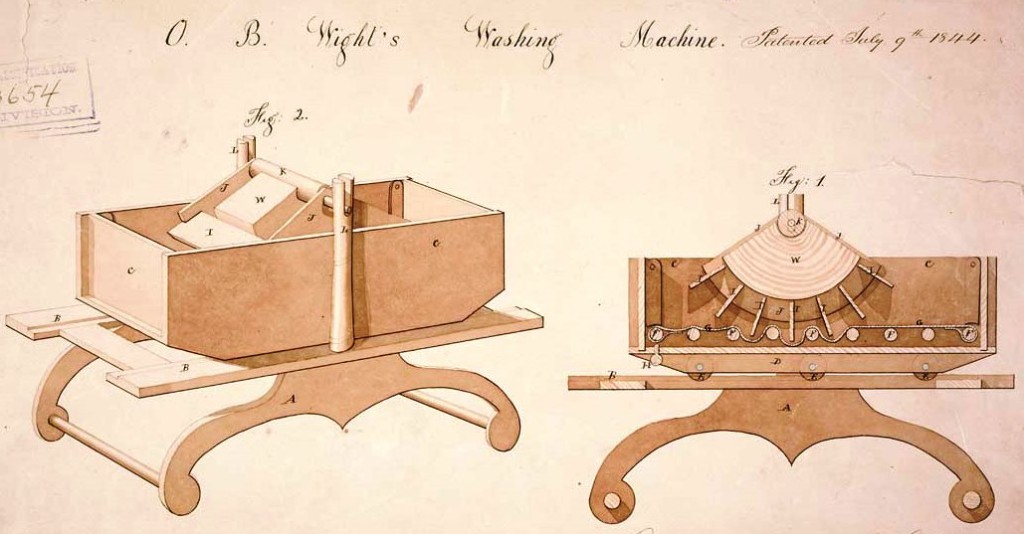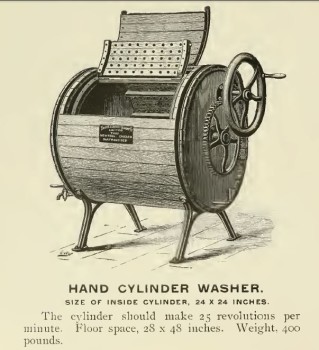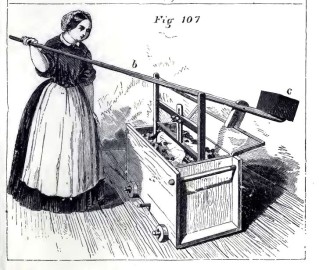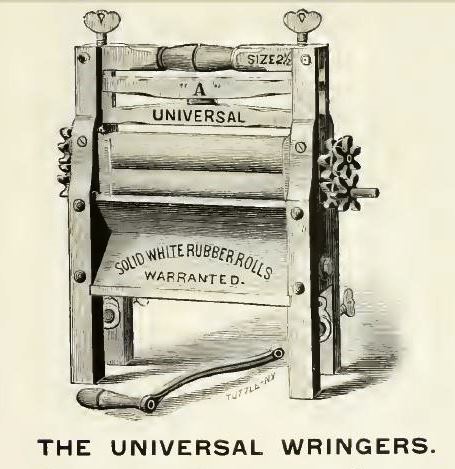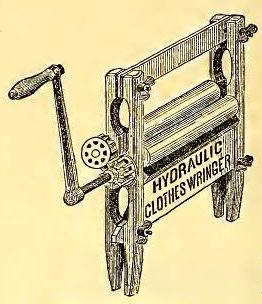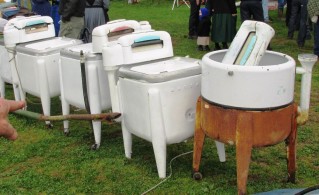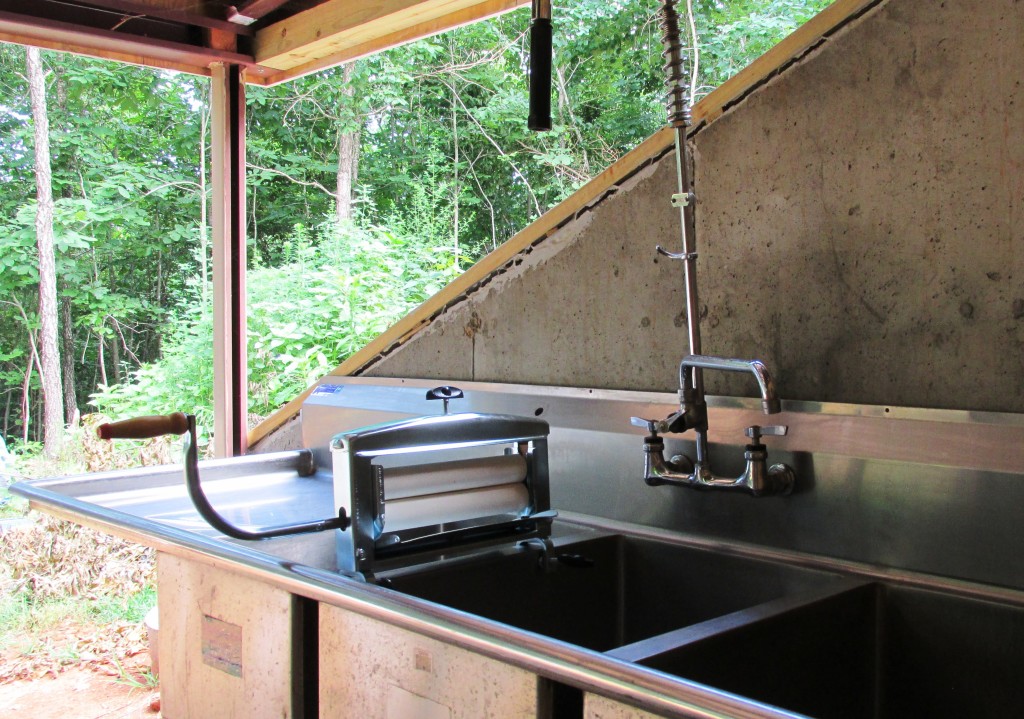Having clean laundry was my greatest off-grid obstacle until I discovered two secrets – washing with rainwater and a hand-crank wringer.
During long-term power outages before we transitioned off-grid, I washed clothes by hand. It was not terribly difficult, but I was never thrilled with the results. I haven’t used an electric or gas-powered dryer for decades, so line-drying laundry wasn’t the issue. In fact, I think hanging clothes out to dry is therapeutic (all that fresh air and exercise) and enjoyable (no dryer racket or static cling).
The problem was getting the clothes clean. I would rub and scrub and twist the water out until I could twist no more. Small articles weren’t too grueling, but sheets, jeans and large towels held so much water that the clothesline sagged nearly to the ground. The fabric took eternities to dry and was stained by excess water marinating along the bottom edges for hours. I tried all sorts of soaps, but still had dingy laundry.
For a while, I thought, “Well, that’s just the way it is.” But then I started some serious washerwoman research. As always to relearn old-time skills, I grabbed my books from the mid-1800s and early 1900s. Incidentally, sites such as OpenLibrary.org have made such investigation just a click away. At the end of this article are links to a few antique homemaking books in the public domain that can be downloaded and saved for future reference.
Washing clothes by hand in the 1800s
Because so many styles of mechanized washing machines have been designed and patented through the years, I thought washing clothes by hand must be absolute drudgery or inventors wouldn’t have bothered. Many lengthy books, such as “The Laundry Manual; or Washing Made Easy” by a Professed Launderer, 1861, were devoted entirely to washing clothes. Days of the week revolved around a laundry schedule:
“The family linen must be looked over the day before washing, and people in Scotland usually prefer Tuesday to be that very important day – first, because it is best to have the washing early in the week, so that it is all finished and put away before Saturday; second, because it is better to have Monday to look over and mend clothes, soak, remove stains, etc., and of course that cannot be done if we wash on Monday, as Saturday is too far away, and the clothes would lie too long if soaked on Saturday; and Sunday, of course, is out of the question.
“If possible, 1 or 2 hours ought to be added to the day at the beginning of the washing day, to prevent the wheels of the household machinery getting out of the gear before the day is over, and prevent the breadwinners from feeling unnecessary discomfort. First light the boiler fire and fill the boiler; then make and take a cup of tea, which is the best and necessary refreshment before starting hard work at an early hour.”
― “Household Cookery and Laundry Work” by Mrs. Black, 1882
Generally, 150 or so years ago, laundry was mended and sorted on Monday, washed Tuesday and pressed, mangled and starched Thursday and Friday. Unsurprisingly, doing laundry was an enormous task — considering a woman’s dress could contain 12 yards of cloth, water was heated manually in tubs, and many clothing articles had detachable frills to be cleaned separately.
Multitude of washing machine inventions
I applaud all those many inventors who strived to make the task easier. The vast array of washing machines I encountered reveals inventors’ determination and abstract thinking. Early machines shook or pounded clothes clean, often smashing buttons and ripping expensive fabric in the process.
The American Floating Ball Washing-Machine, patented by Indiana farmer Mr. Moore in 1857, employed 200 to 300 floating elm wood balls the size of Seville oranges (about 3″) to gently rub clothes as a laundress manipulated the machine’s long handle. It was said to very closely imitate human hands in “pounding, scrubbing and squeezing.” Whew. I bet children enjoyed playing with that gadget.
While the multitude of washing machines evolved into the spinning drum models common today, the wringer went to the wayside – until us modern homesteaders demanded its revival. And, you know what? The wringer has changed little in more than 150 years. It is still simple, effective and easy to use.
Wringers back in style
In the mid-1800s, a wringer was relatively expensive because of one feature – vulcanized rubber on the rollers. Care had to be taken to prevent damaging the rolls, which were costly to replace. During World War 2, the U.S. government even advised housewives to take especially good care of their wringer washers. After the war, rubber eventually became affordable.
By the time I was a child in the 1960s, wringer washers were nearly extinct although my mother used one until I graduated from high school. I can still recall the horror as I carelessly pinched my fingers in the electric-powered wringer, but admit the machine was fun for a youngster to use.
When I decided I wanted one for our off-grid evolution, I thought my husband could retrofit one of those 1950s machines. They still occasionally turn up at auctions, but go for inexplicably high prices. I am not sure if the novelty drives bids, but recently we watched as a line of the old machines, some not operational, sold for more than $200 each. As it turns out, a modification would be impractical and costly. Besides, I only wanted the wringer and not the tub.
I found the perfect solution online. After setting up the three-compartment restaurant sink we nabbed at a consignment auction, we ordered an American-made stainless steel hand-crank wringer from BestDryingRack.com in Missouri. The wringer is very similar to those from the Civil War era – simple, effective and easy to use – except made of longer-lasting, better materials.
Laundry setup with a view
The restaurant sink may seem a bit over-the-top for a tiny off-grid home, but it is my entire kitchen/laundry/mop/garden wash station. The wringer easily clamps from one basin to the next and the drip tray can be flipped to divert the water from one sink or another, an improvement during the past hundred years. Wringing laundry with this simple tool eliminates labor spent twisting clothes and it actually gets the water out, very important for bright, clean laundry. Without all that hand-wrenching, too, garments aren’t distorted out of shape.
In this article, I explain why rainwater is best for laundry and how to quickly test your water yourself for hardness. Meanwhile, for more old-fashioned household laundry hints, check out these online books:
Reference books free to download
“Beeton’s Book of Household Management” by Mrs. Isabella Beeton, 1861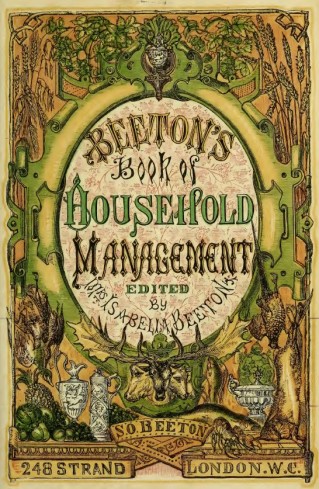
“Household Work; or the Duties of Female Servants,” 1850
“The Sunlight Year Book,” 1898
“Household Cookery and Laundry Work” by Mrs. Black, 1882
The British Housekeepers Book, by John Henry Walsh, assisted by a committee of ladies, 1857
“Hand-Book for the Kitchen and Housekeepers’ Guide” by Flora Neely, 1879
“The Ohio Farmers Home Guide Book,” 1888
“The Laundry Manual; or Washing Made Easy,” 1863 (in my opinion, the best of these guides listed here)
